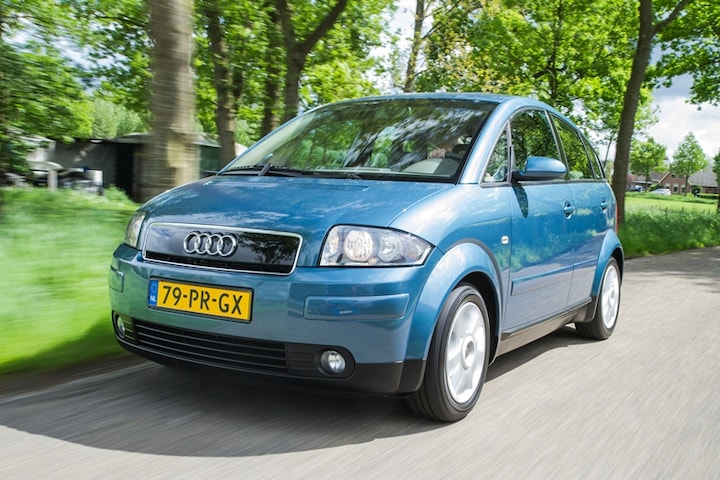Real advantage through technology

Yes, we dug up another oldie for this section. And not just any: the illustrious Audi A2. At the time of its introduction, Audi was committed to a better climate and environment, resulting in the light and streamlined A2. What did that car consume in practice?
The Audi A1 passed here earlier. Although this model filled the position of the A2 in the range, there was no spiritual successor. As outlandish as the A2 was, technically and visually, the A1 was as mainstream. Consumption also turned out to be mainstream in practice, or even less than that. Enough about the Audi A1 for the time being, on to the practical consumption figures of its special predecessor.
Consumption A2 1.4
It’s tempting to start with the diesels, especially the extremely fuel-efficient 1.2 TDI 3L. Still, the petrol version is the most interesting in the current time, although the 1.4-liter is actually not a special engine at all. At the time, it was also supplied in, among other things, the Volkswagen Polo.
He may not be special, A2 drivers consume an average of 1 in 15.6 (6.4 l/100 km) with it. Not earth-shattering value, but for a mini-MPV that is at least 20 years old, it can get by. Although the average is okay, the most economical A2 1.4 driver really surprises: it achieves 1 in 19.7 (5.1 l / 100 km), measured over a distance of more than 80,000 kilometers and in four years. If you drive less miles and less consciously, as the worst-scoring A2 driver did, you are more likely to see a value of 1 in 14 (7.1 l/100 km).
Consumption Audi A2 1.2 TDI 3L
Strangely enough, the number of diesel drivers who keep track of consumption is very small. With such an extremely economical model as the Audi A2 3L, we would have expected a little more than three values. The average consumption of 1 to 29.8 (3.35 l/100 km) should therefore be seen mainly as an indication.
This means that the A2 3L does not reach the 3 l/100 km (1 in 33.3) so desired by Audi, and that also applies to individual drivers. The manufacturer’s specification was 1 in 31.3 (3.2 l/100 km), and with 1 in 30.9 (3.24 l/100 km), the most economical A2 driver comes quite close to that.
In addition to the A2 3L, there was also a ‘normal’ 1.4 TDI diesel, of which we can only report two consumption values. Although the average is therefore not representative, with 1 in 22.5 (4.5 l/100 km), the 3L variant is in any case considerably more economical. What we do dare to conclude is that the Audi A2 is on average more economical than its popular successor A1. Although the latter has more modern and much more powerful engines, there is no improvement in terms of fuel consumption.
– Thanks for information from Autoweek.nl